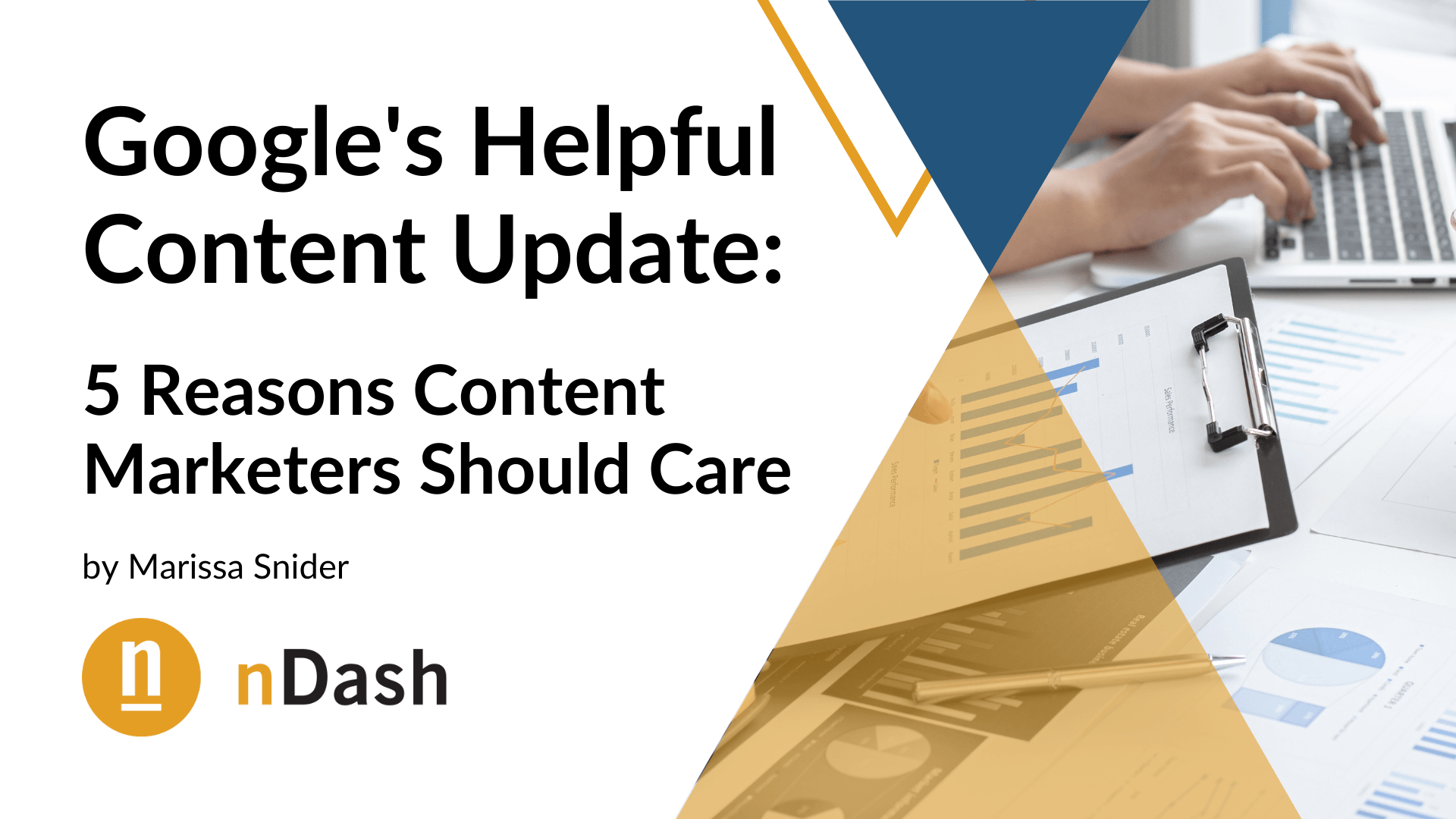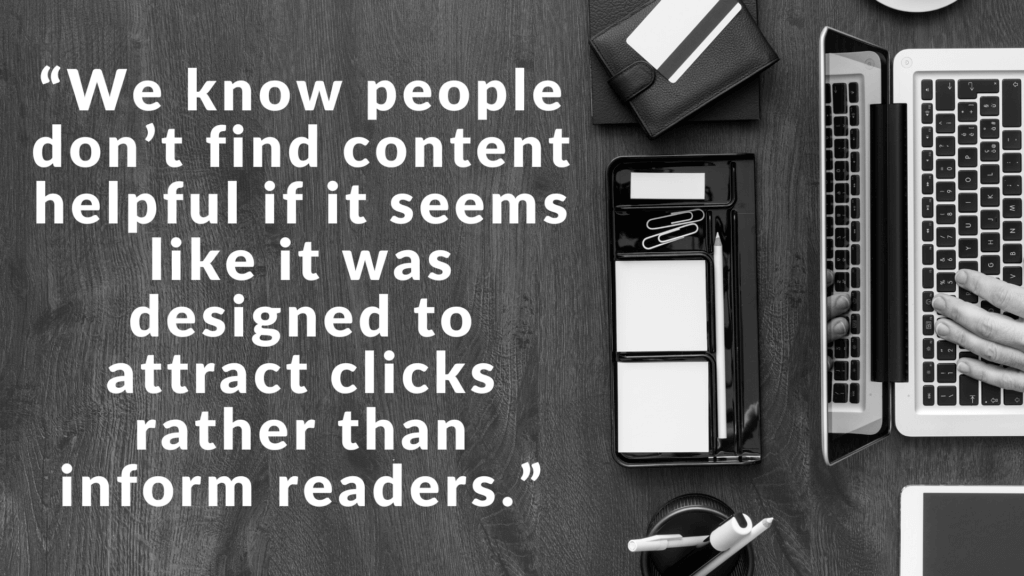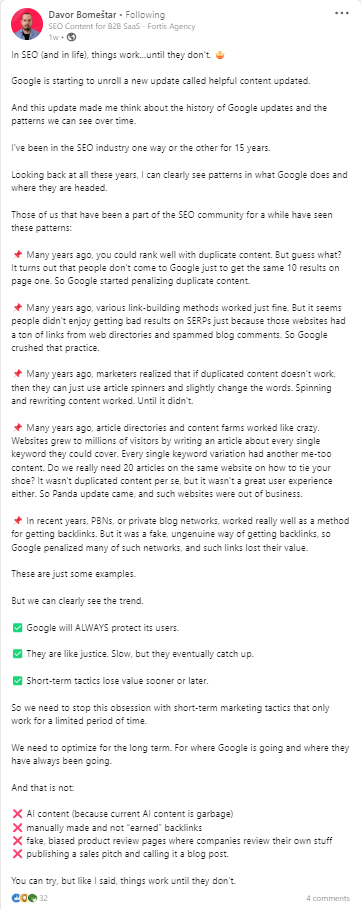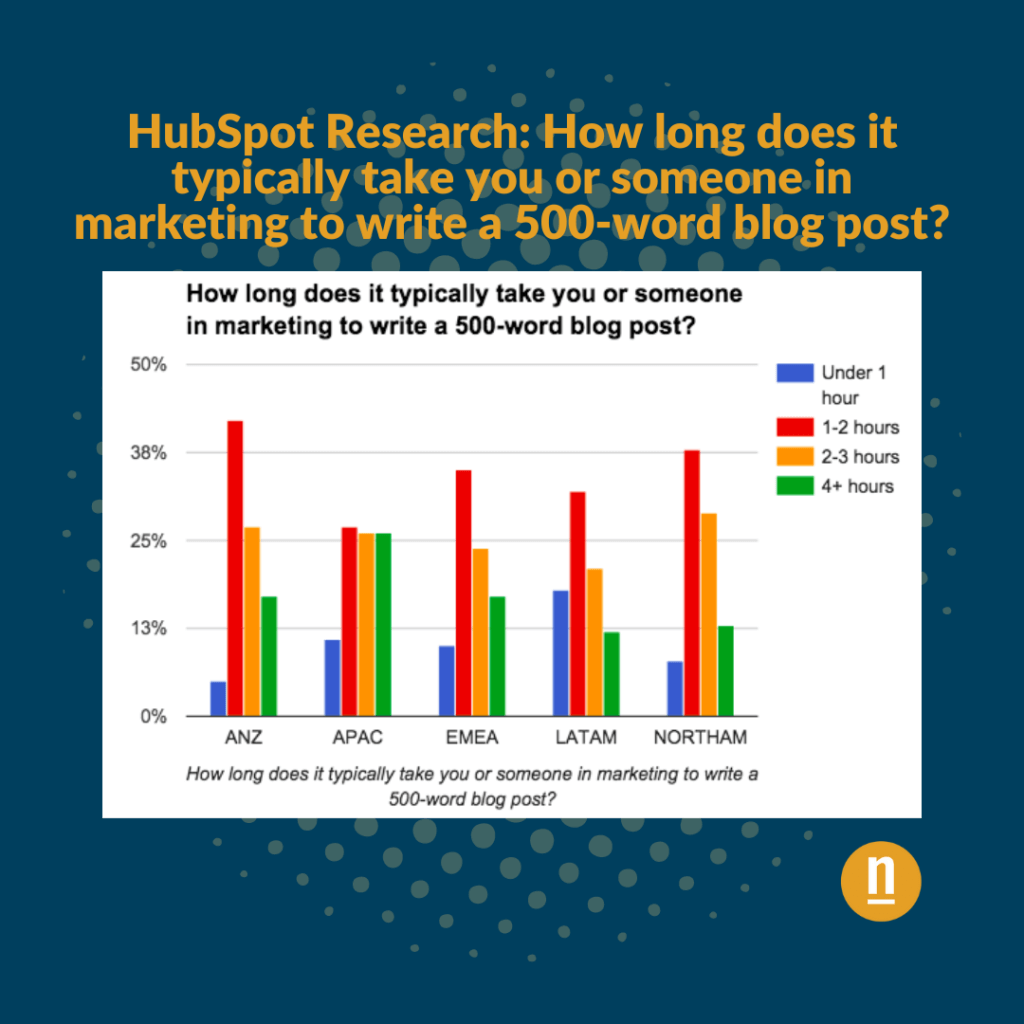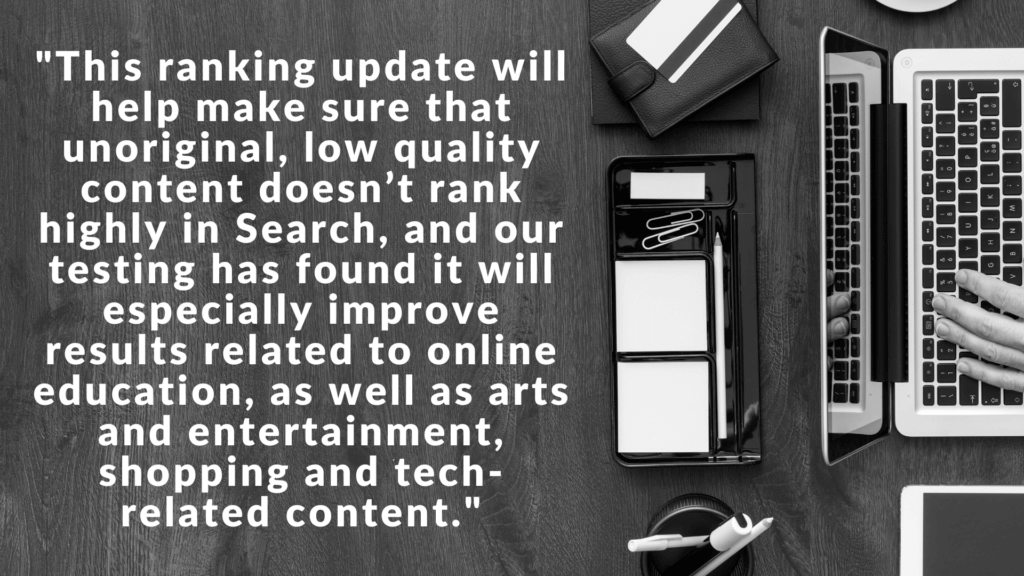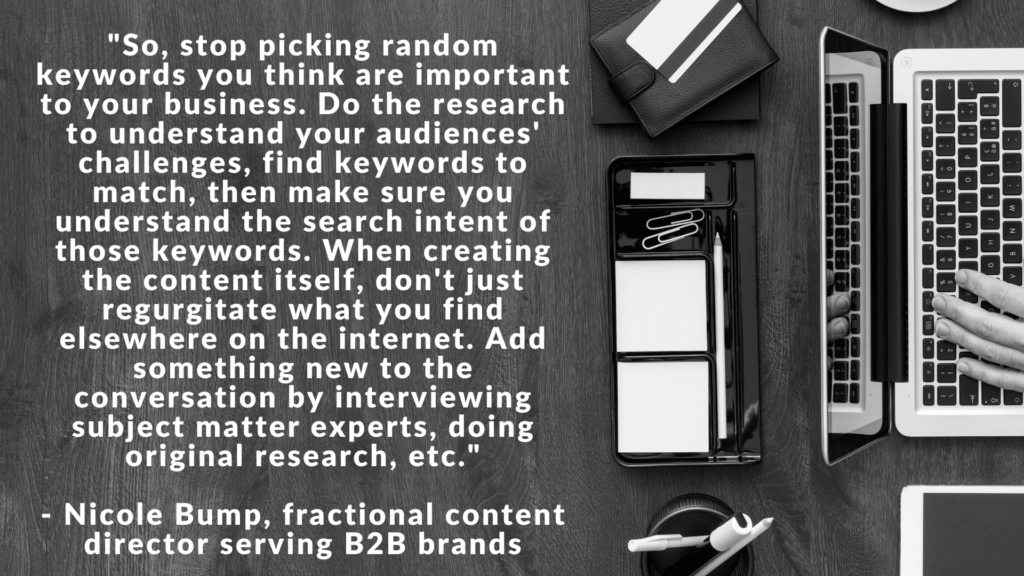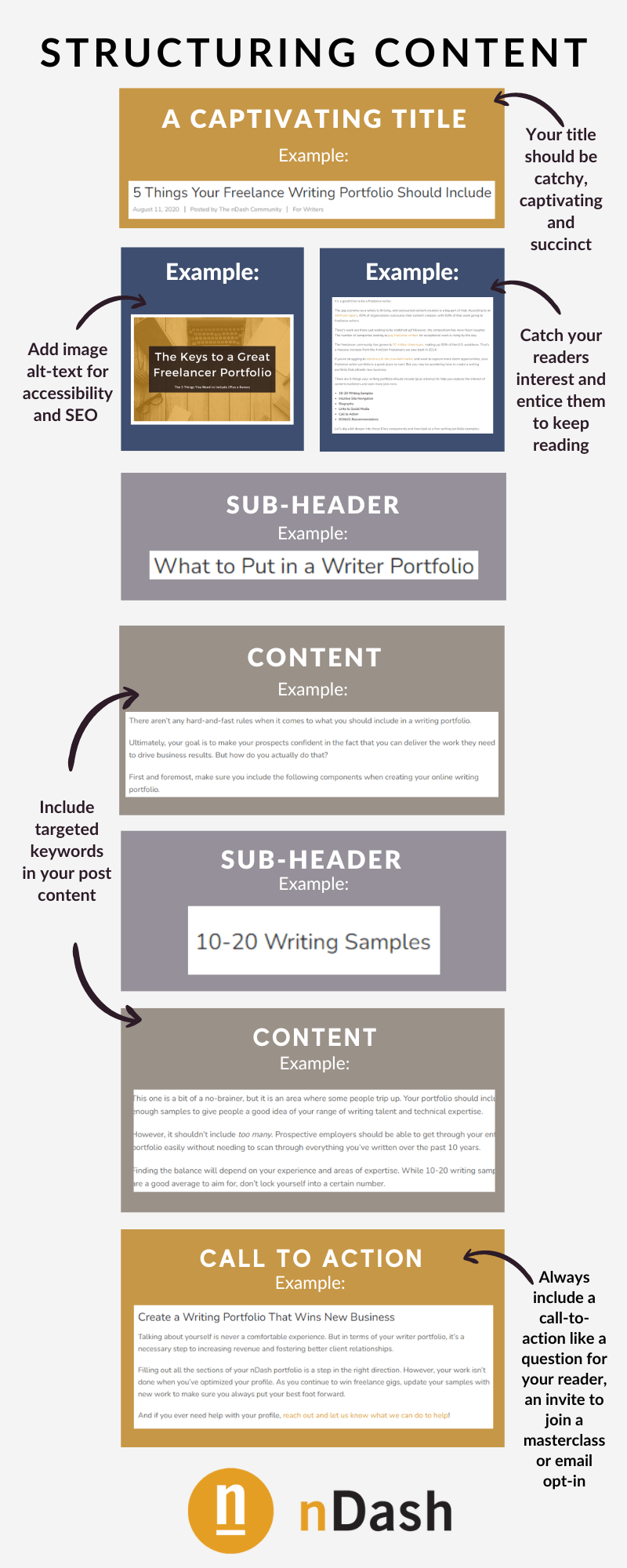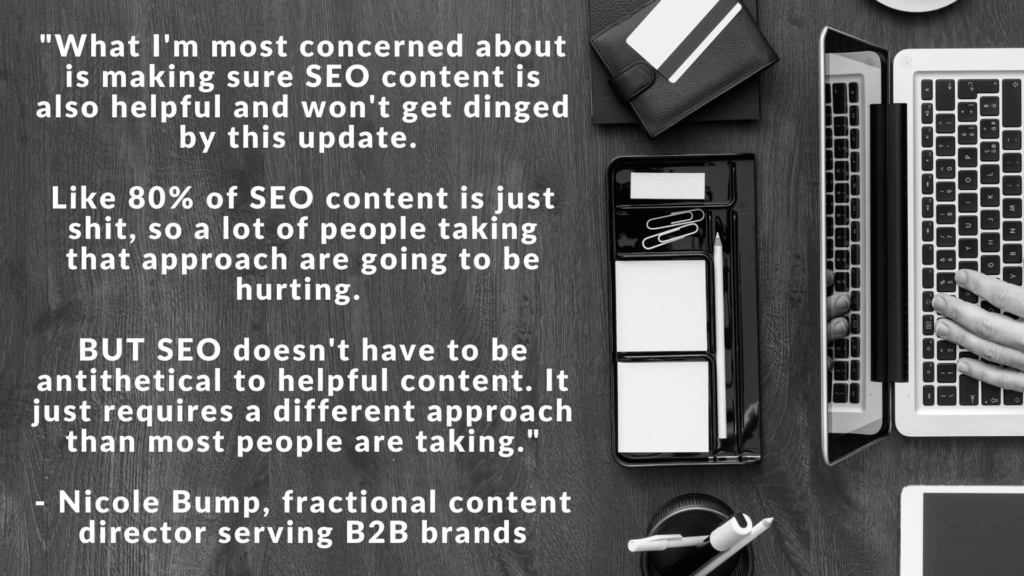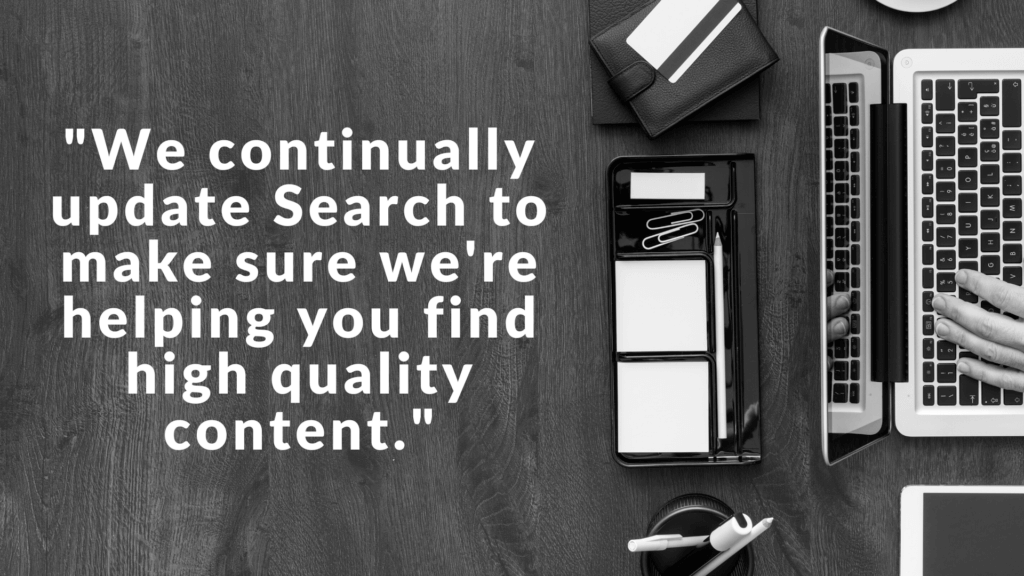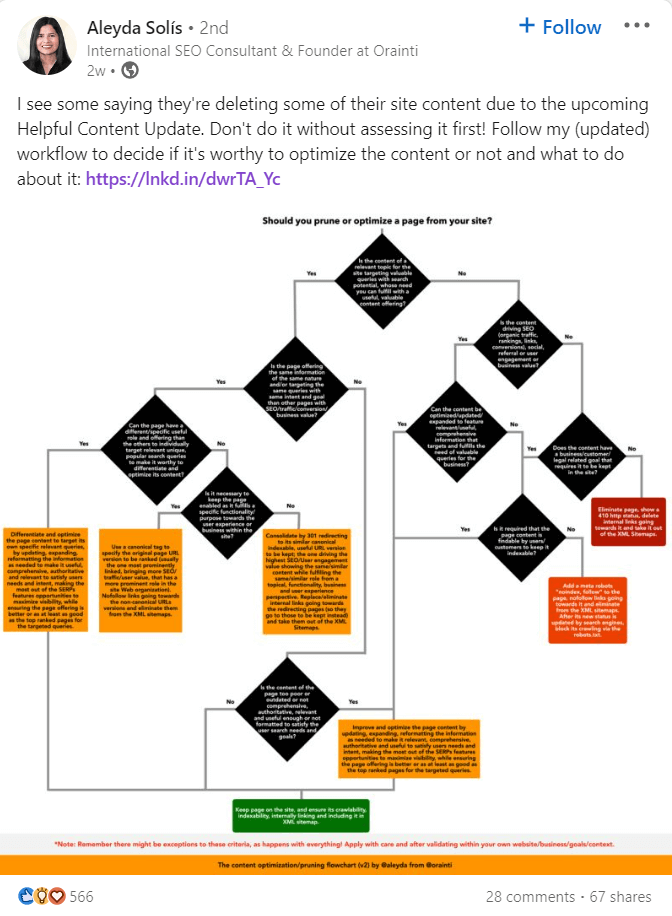On August 22nd, Google announced its release of the helpful content update. This update signifies a fundamental shift in the world of content marketing. This guide takes an in-depth look at Google’s Helpful Content Update and what it truly means for content marketers and freelance writers.
The user experience matters. Over 86% of consumers will gladly pay a higher price for a better experience–imagine what that means for the digital world.
What is Google’s Helpful Content Update?
Google’s latest update is another measure to support websites rich in quality content–including authentic substance designed to serve a people-first purpose. Google is continuously invested in creating an online experience that meets the needs of human users.
The Helpful Content Update adds a signal to the algorithm that determines search engine ranking. This signal is not a penalty. Instead, it’s a measure to determine site-wide content quality. As a result, some websites may experience a drop in search engine ranking. This update was announced on August 18, 2022, for English language websites and is expected to roll out sometime in the two weeks following the announcement.
For many websites, the first indication that search engine ranking has been affected may come as soon as September 1, 2022, with the full weight of this update seen over the next few months. According to Google, affected websites will likely see a gradual decline.
Why is the Update Happening?
The Helpful Content Update aims to provide human users with a satisfying online experience. It’s part of the search engine’s larger initiative to promote an internet full of people-first content.
Google has indicated that websites containing a large volume of thin content risk losing search engine result page (SERP) rank due to this update. This includes low-quality signals like:
- A lack of firsthand experience
- Automated content creation
- SEO-focused niche or trend-chasing content
- Affiliate marketing content
- Click-bait content
However, context is important. This update uses a site-wide signal, meaning that the effect is weighted. A website with some affiliate marketing links and a significant percentage of value-added content won’t be affected as much as a niche website created solely to rank for a specific keyword.
How to Change Your Strategic Approach
If your content marketing strategy focuses heavily on SEO-focused tactics, Google assures that you can take steps to recover search engine ranking.
As a whole, websites should shift their content creation focus to a people-first strategy. This change, paired with the intentional audit and removal of categorically ‘unhelpful’ content, is the best way to improve search engine ranking.
The classifier for this signal runs continuously. This means you won’t have to wait for Google to release a new update to begin seeing a positive effect once unhelpful content is removed. It also means that changes in search engine ranking, positive or negative, will likely be observed over several months.
While this update is significant, it’s also important to clarify that the update doesn’t invalidate search engine optimization.
Google provides guidelines that work together with their already-established search engine optimization (SEO) guidelines to help content creators find the right balance. It’s important to note that creating ‘People-First’ content doesn’t mean that SEO is taboo. SEO measures are intended to support quality, people-first content, not the other way around.
The Importance of Focusing on People-First Content
Along with the Helpful Content Update, Google released a set of guidelines to help content marketers determine the difference between ‘people-first’ and ‘SEO-first’ content. On that list, Google included the ‘extensive use of automation to produce content,’ which is being interpreted by many as a penalty for AI-derived content creation.
What is AI-Derived Content?
Artificial Intelligence (AI) uses computers to mimic the human mind’s capabilities. The field of AI is broad, encompassing many different technologies, including game playing, speech recognition, understanding natural language, text or video-based media generation, and text-to-speech media.
AI-derived content includes any media produced in part or as a whole by artificial (computerized) means.
How is AI-Derived Content Used for Content Marketing
The integration of AI-derived content is becoming commonplace. A 2021 study found that 56.5% of content marketers are customizing content using AI–and are spending proportionately more on these technology investments for analytics, personalization, and segmentation.
The biggest area of concern is automatically generated content. Technologies using Natural language generation (NLG) can compile and sort data streams, turning numbers into intelligently written communication. Many companies are putting these technologies to work to meet the growing demand to produce insight-driven content.
There are dozens of applications for AI in content marketing.
One of the most time-intensive tasks, writing content, can be automated using NGL technologies. With the average time spent per 500-word blog sitting between 1-2 hours, more content marketers have turned to AI to keep up with the daily demand.
Other ways that content marketers are using AI include:
- Interactive chatbots
- News feed personalization
- Predictive content
- Ad management optimizations
- Content curations
- Content accessibility (text-to-speech for written content)
The growth of AI in content marketing is primarily due to the inherent efficiency of automation. When volume is the priority, computers can achieve more content in less time–typically for a lower cost than human talent.
The Link Between AI-Derived Content and Google’s Helpful Content
Using AI in content marketing is not inherently bad. With a strong ethical influence, artificial intelligence can provide a better overall human experience by delivering perfectly timed, personalized content. The problem is that Google’s philosophy on creating ‘helpful content’ centers around the idea of content that is written by people, for people.
What this means is using AI tools to glean data-driven insights that add value to human written content will likely not be signaled for low quality. However, using AI-generated content to replace human writers is more likely to send a strong low-value content signal.
Let’s look at Google’s guidelines for AI-derived content to understand what that means.
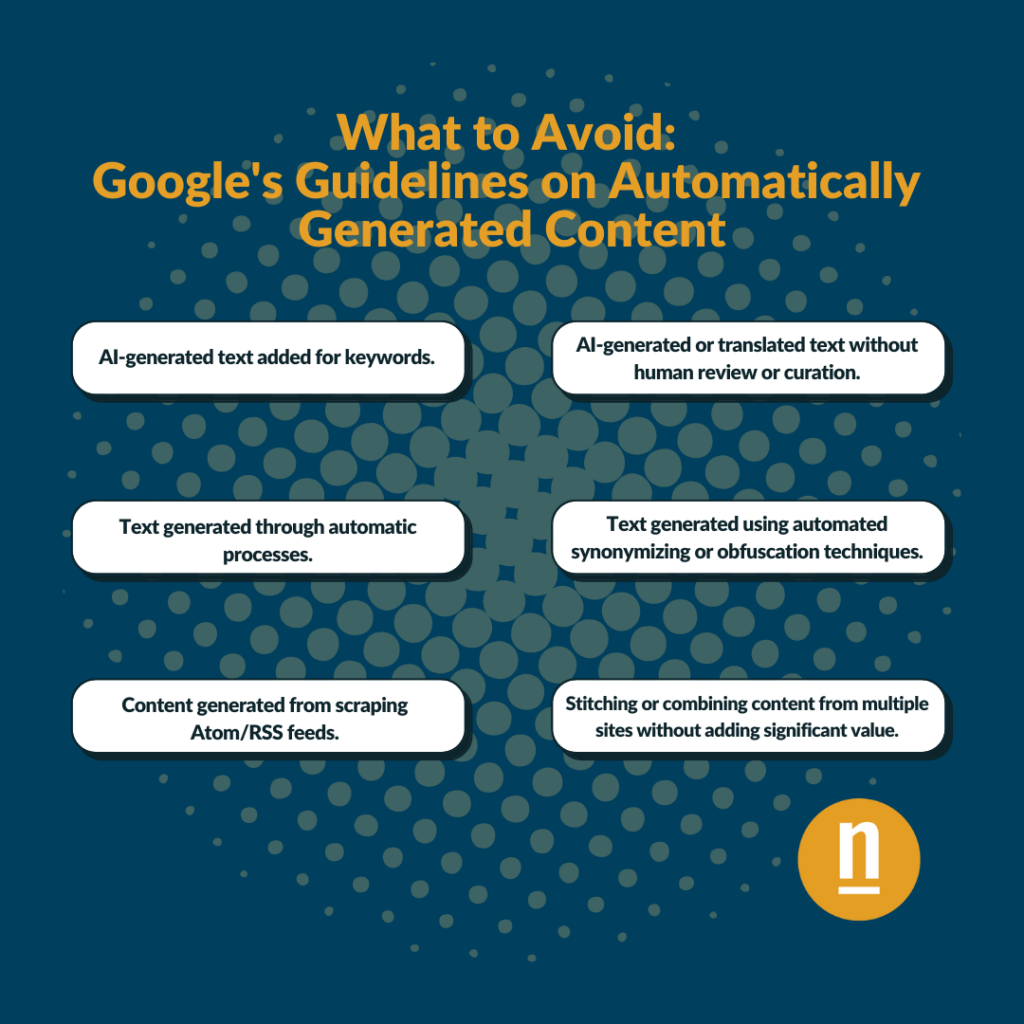
The guidelines above are not a hard stop for all AI content tools. However, content marketers should thoroughly research AI tools to fully understand how they work before incorporating them into a strategy.
Google’s guidelines are clear. Using AI-generated content to bulk up word counts or reach an arbitrary content volume is an SEO-first strategy. Similarly, repurposing content using AI to swap out words in an attempt to avoid a duplicate-content penalty is also an SEO-first strategy.
The guidelines leave little room for interpretation when it comes to repurposing content in general.
It seems that combining content from multiple sites can go either way. Suppose the repurposed content is published with significant added value, like sharing case studies demonstrating firsthand experience with the repurposed content included for context. In that case, it is more likely to meet the definition of high-value content and be classified as ‘people-first.’
Content marketers should approach the use of AI-derived content strategically. The right AI-powered content tools can be part of providing a valuable online experience. The key is to consider why a specific technology is used in a specific strategy. If the goal is to add value–like data-driven insights or to streamline the sales process, then pursue it in moderation.
If the goal is to spend less time or money creating content or to hit a volume-based content goal, your priorities may be out of alignment with Google’s People-First philosophy. The latter will likely have a greater negative impact on your search engine performance.
Why Should Content Marketers Care About This Update?
Google’s algorithm evolves continuously. Every few months, the search engine giant rolls out a new change with varying implications for content marketers. A quick look at recent history shows a core update in May 2022 and a product reviews update in July 2022. What makes the Helpful Content update notable?
This update represents a more significant change regarding content creation that will send some content marketers back to the drawing board.
1. This Update Affects Content Strategy Alignment
A people-first content strategy centers around developing resources that help people solve problems. Human users are behind over 99k Google searches performed every second of the day. Collectively, we’re looking for tips, answers, education, reviews, tutorials, humor, examples, data, entertainment, and other types of stimulation to inform our decisions and pass the time.
The demand for content drives the opportunity to reach an audience. Since 2018, the content marketing industry has seen significant growth, projected to reach 14.3% CAGR by 2026. This growth brings an infusion of fresh faces and new ideas that are part of the cultural shift behind Google’s Helpful Content update.
Content marketing in the digital age first emerged in 1996, and over the past 25 years, popular themes in many content strategies revolved around search engine optimization (SEO). From a strategic perspective, it was a natural progression of human minds solving problems to achieve desirable search engine rankings.
Search Engine Optimization (SEO) is the practice of making a series of small changes designed to help search engines find and index web content resulting in a better position in search results. These strategies are fundamental to bringing search engine traffic to a website. Widespread demonstrated success with SEO led to the emergence of content strategies built around these optimizations.
Google is now bringing the focus back to the human users behind the searches.
That is the concept behind their People-First Strategy guidelines. This means that content marketers still prioritizing keyword density and word counts over the usefulness of the content may lose some of the momenta that their SEO-first content strategy has previously offered.
What content marketers can take away from this update is that it may be time to rethink their content strategies as a whole, emphasizing people rather than SEO. A people-first content strategy is designed to fill a need with an experience that the intended audience finds satisfying. To achieve this, content marketers may need to change how they think about creating content.
Content should be structured and focused, providing the answers or information that the audience expects to find. It should follow a logic designed for how the human mind receives and interprets information. It should be authentic, generated from a firsthand point of view, or with demonstrated expertise in the subject matter. All content within a strategy should be tied to a specific purpose aligned with meeting a need identified in the target audience.
Here are a few important questions to ask when evaluating a content strategy:
- Who is the audience for this content?
- Would this audience come directly to this organization if this content did not exist?
- Does this content demonstrate firsthand experience?
- What is the purpose of this content?
- Does this content provide enough context to fill the intended need?
- Does this content provide a satisfying experience?
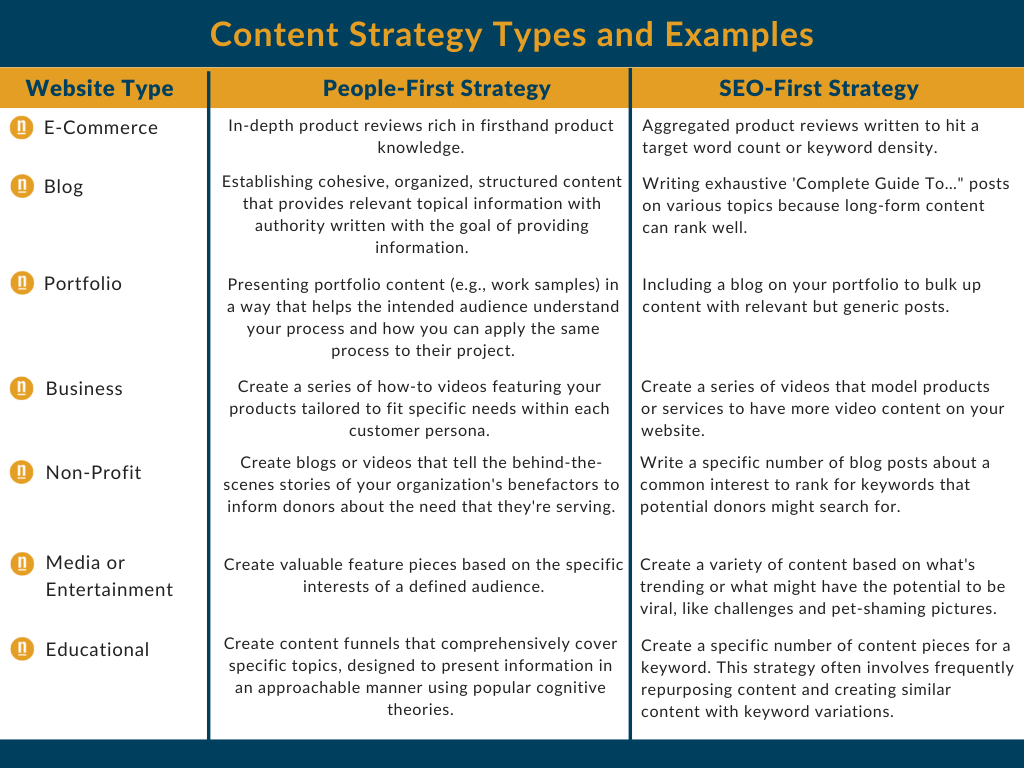
2. This Update Calls for More ‘Satisfying’ Content
Dialing into a ‘people-first’ strategy, content marketers are likely to feel influenced to re-examine how they approach content creation. Google specifically uses the term ‘satisfying’ when describing the type of content they expect to see in a ‘people-first’ strategy. The only trouble is that this term is subjective at best.
The word satisfying means ‘producing pleasure or contentment by fulfilling needs or wants.’ At best, it’s a feeling that exists on a spectrum. So, what does that moving target mean for creating ‘satisfying’ content?
The most literal translation is to provide what users need or want when conducting a specific search. We’ve been stepping around this for a while now with search intent, and Google’s Helpful Content update just adds more weight to the importance of fulfilling those needs.
How to Create Satisfying Content
Step One: Search Intent
Search intent is poised to become the cornerstone of creating satisfying content. As a first step in creating new content, marketers need to dive deep into search intent to identify a complete list of needs and wants to be addressed.
Step Two: Structure
The next step in creating satisfying content is structuring the information by combining different media choices to immerse all the senses while maintaining a logical and organized presentation. Content marketers must consider how cognitive theories and instructional design models fit into their content creation process.
Step Three: Quality Content
Each piece of satisfying content will include various building blocks that provide variety. Each component should demonstrate the same level of quality for a cohesive presentation. Written text should be factual, matched to tone, and well-organized to achieve a specific communication goal. Video content should be created using high-resolution footage with professional editing. Similar quality controls should be employed for photography, illustrations, and other media types.
Step Four: Degree of Added Value
It’s not enough to write factual, entertaining, or well-branded content. These are all necessary components of providing a satisfying experience, but none of these stand up on their own. To create satisfying content, marketers need to focus on the added value of the content they produce. Google specifically calls out low-value content in their ‘People-First Content’ guidelines, so content marketers will want to ensure they’ve intentionally found ways to add value.
Examples of added value:
- Quotes and insight from reputable industry sources.
- Explainer videos that demonstrate a process or provide a tutorial.
- Infographics that present a visual of complex information.
- Live feeds, workshops, and webinars that facilitate engagement.
- Tools, worksheets, and other hands-on media with topical relevance.
- Examples, case studies, and small wins that demonstrate expertise in action.
3. This Update is Part of Google’s Continuous Process Improvement
The biggest reason why content marketers should take note of Google’s Helpful Content update is that it signifies a fundamental shift in the type of content that Google will rank in the future. This signal and many others in the core algorithm continuously monitor websites for content quality. As the distribution of content changes on a website, its classification changes which can correlate to a positive or negative change in search engine ranking.
Websites with a high proportion of low-value content can improve search engine ranking by removing or improving content. It also means that some websites that contain low-value content may still rank well if other signals from that website indicate helpful or relevant content exists on the website. So, the takeaway for content marketers is that it is time for a fundamental shift, probably not a massive overhaul or rebranding campaign.
4. This Update Places a Premium on EAT: Expertise, Authority, and Trust
The acronym E-A-T, which stands for Expertise, Authority, and Trust, is a quick way of quantifying quality website content. Since achieving helpful content is predicated on the quality of the content, this update increases the relevance of E-A-T as part of a sustainable content strategy.
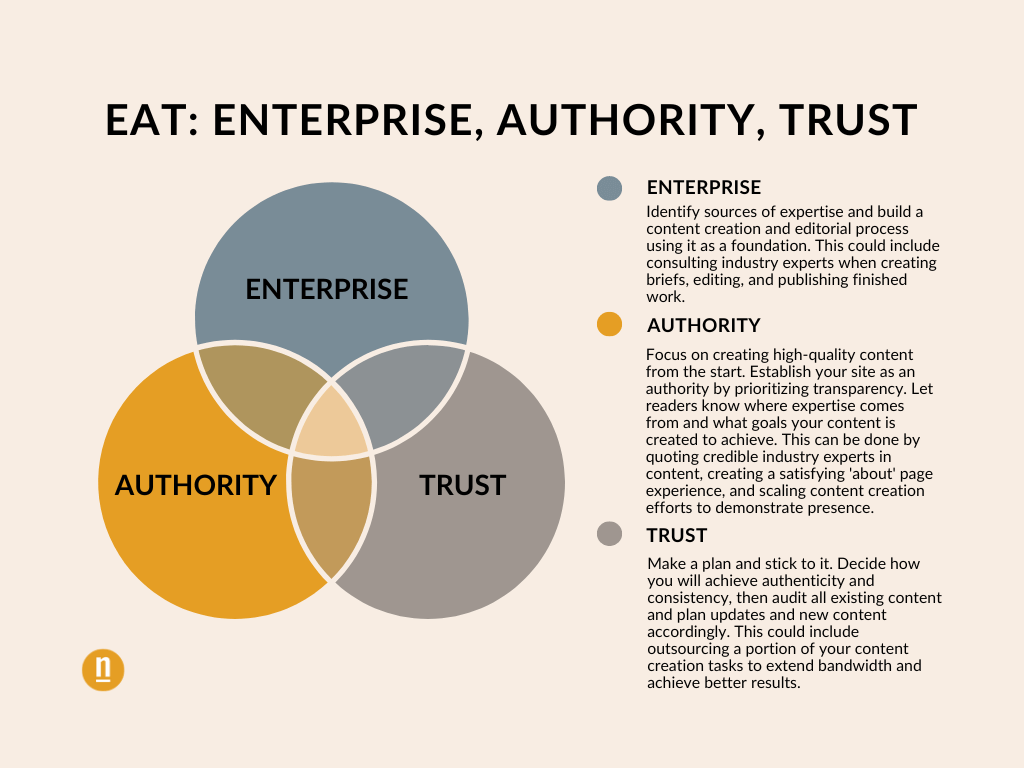
Expertise refers to the level of knowledge, skills, and experience attained in a specific area. Accreditation is a widely accepted indicator of expertise, especially in the medical community. Authority refers to the strength of a website’s reputation or how many people collectively trust the site. Trust refers to the ease with which individual users accept information from a website.
A website must demonstrate all three attributes to achieve a high level of E-A-T.
For example, a news site should contain content produced through a formal editorial process and written by credible journalists. A financial services website should have content produced by accredited finance professionals like certified accountants.
However, there is over one way to establish expertise. Everyday expertise that comes from lived experiences can be used to achieve a high level of E-A-T. The difference between a medical advice website produced by accredited doctors and medical professionals versus a website produced by an individual with firsthand experience living with a condition is how the content is presented. Both types of websites can achieve high E-A-T with consistent quality and an authentic approach to creating content.
Here is what content marketers can do:
- Expertise: Identify sources of expertise and build a content creation and editorial process using it as a foundation. This could include consulting industry experts when creating briefs, editing, and publishing finished work.
- Authority: Focus on creating high-quality content from the start. Establish your site as an authority by prioritizing transparency. Let readers know where expertise comes from and what goals your content is created to achieve. This can be done by quoting credible industry experts in content, creating a satisfying ‘about’ page experience, and scaling content creation efforts to demonstrate presence.
- Trust: Make a plan and stick to it. Decide how you will achieve authenticity and consistency, then audit all existing content and plan updates and new content accordingly. This could include outsourcing a portion of your content creation tasks to extend bandwidth and achieve better results.
5. The Impact on Niche Sites Varies–Understand How & Why Your Site Might be Affected
The internet is full of a complex range of topics. Some, like websites intended to entertain by sharing cat videos, are comparatively low-risk. Others, like those that can impact the health, financial stability, or safety of an individual or the well-being of society, are high-risk.
Google terms the high-risk category of web content as YMYL content (Your Money and Your Life). Niche YMYL content has the potential to cause harm–either directly to the person viewing the content or indirectly through mistrust by sharing inaccurate information. YMYL niche sites, like those created to share information or sell products for personal health or financial advice, have a heightened responsibility to share trusted, authoritative information.
Google’s Helpful Content update doesn’t target YMYL niche sites, but there is a connection between content on these sites and quality ratings that determine how strong or weak this signal is applied. Google says: “For pages about clear YMYL topics, we have a very high Page Quality rating standard because low-quality pages could potentially impact a person’s health, financial stability, or safety.”
Examples of YMYL niche topics:
- Personal & Public Safety Information (Evacuation Routes, Storm Shelter Locations)
- Healthcare Advice (Symptom Checkers, Home Remedies)
- Dangerous Personal Opinions (Extremist Views)
- Online Commerce & Reviews (Online Pharmacies)
Even slight inaccuracies in information shared about heart attack symptoms or potentially providing access to controlled substances from an untrustworthy source is a clear risk to personal and public safety. These YMYL niche sites are anticipated to be highly affected by the Helpful Content update.
Examples of Possible YMYL niche topics:
- Weather Forecasts
- Diet and Fitness Advice
- Personal Hygiene Tips
- Automotive Reviews
For niche topics where slight inaccuracies probably don’t have a life-altering impact, like discussing the chance of rain on a given day or sharing an opinion on a popular car model, websites may experience stronger or weaker signals on a case-by-case basis. These niche sites may either categorically fall under YMYL or not. For these sites, it’s important to remember that this update is a site-wide signal, so the total proportion of helpful content across the site will be a more significant factor than the potential presence or absence of YMYL content.
Examples of Non-YMYL niche topics:
- Industry News (Announcements, Certifications)
- Personal Opinions on Entertainment Icons
- Commerce Sites for Common Goods (Office Supplies, Home Decor)
- Arts & Crafts Tutorials (How to Sew a Dress)
While non-YMYL niche topics may be safe from the heavy scrutiny that comes with the potential to cause harm, these sites are not exempt from being affected by the Helpful Content update. The purpose of the site and how the content strategy is formulated will play a much bigger role than the niche type in determining the signal’s impact.
The Take-Home Message on Google’s Helpful Content Update
Content marketers should pay attention to the fact that the largest search engine–Google, is pushing for better quality content. First, it’s time to meet the needs of human users first, relying on tried-and-true search engine optimization to support content created for people by people. Next, it’s time for content marketing to shift towards people-first strategies that focus on producing quality, satisfying content to serve a specific purpose.
It’s also time for firsthand knowledge and demonstrated expertise to be an indicator of first-page Google results instead of SEO-hacker content filled with thin, low value for the users searching. Change should begin with a commitment from content marketers and content creators to invest in creating better-quality content. Artificial intelligence will likely play a role in content marketing to augment, not replace, human creators. From content strategies to the entire approach to creating new content, this update signals a need for change that will shape how and why content is created in the future.
Get in touch with our sales team today to discuss how our team of writers, editors, and content specialists can help you achieve your people-first content marketing goals.
FAQ about Google’s Helpful Content Update
Every new update to Google’s search engine algorithm has the potential to make a big impact on how content performs, leaving many questions unanswered.
How long does it take to recover from Google’s Helpful Content Update?
After removing unhelpful content, websites should see a gradual change over a period of a few months.
What questions do content marketers need to ask themselves when re-evaluating content?
Google has a list of key questions to determine if your content is designed to be people-first or SEO-first.
- Do you have an existing or intended audience for the content?
- Does your content clearly demonstrate firsthand knowledge or a depth of expertise?
- Does your website have a primary purpose or focus?
- After reading your content, will someone leave your site feeling they have learned something or achieved their goal?
- Does your content provide a satisfying experience?
- Does your content align with other guidelines identified in Google’s Core Update (May 2022) or Reviews Update (July 2022)?
What does this update mean for deleting or remediating old content?
Suppose your website content focuses on an SEO-first strategy. Then, you have an opportunity to improve SERP by updating or deleting older, low-quality content. However, heed caution when taking big actions. No-indexing a significant amount of content may hurt search engine rankings over the signal applied from the presence of low-value content.
Google has specifically called out the possibility that sites with low-quality content may still rank well if other signals from that website indicate value. Start by monitoring search engine ranking for any changes. Then, instead of deleting old content immediately, work towards shifting your content strategy towards higher-value content. Strategically add new, high-value content while addressing older content step-by-step so that any changes are gradual and based on observed SERP results.
Are certain niche topics targeted over others with this update?
A niche site is a website that has a very specific focus. Typically, these websites burrow down into a smaller niche within a defined industry and cover that narrow focus in detail. Broadly, niche sites created with expertise likely fit Google’s definition of helpful content and will benefit from this update.
However, niche sites created for affiliate marketing purposes that exploit specificity for search engine ranking may not see the same benefit. Furthermore, there may be topic-specific implications for YMYL niches related to Google’s quality content standards which factor into this update.
Officially, Google isn’t targeting specific niches for this update, like Google’s last update targeting review sites. However, YMYL-niche sites are natively sensitive to quality-content-related updates and should closely monitor changes in SERP going forward.
What are some alternative methods for scaling content creation?
This update threatens quality-related implications for the use of AI-generated content creation. While even Google uses AI tools in search engine ranking, this update aims to promote people-first content. That means content created by people, for people.
Here are a few ideas for scaling content creation that support a people-first strategy:
- Diversify Content Production: Balance input from your industry expertise with support from a content team to produce a variety of media that extends the reach of a particular message.
- Outsource Editorial Tasks: Quality content takes a lot of effort. Get help when and where you need it most with on-demand help from freelancers ready to step in and help you produce content.
- Use the Right Tools: A little automation in scheduling content can go a long way toward freeing up human hands to focus on the creative side of putting content together.
Editor’s note: This post is by nDash community member Marissa Snider. She’s a freelance writer with a decade of instructional design and corporate learning experience.
